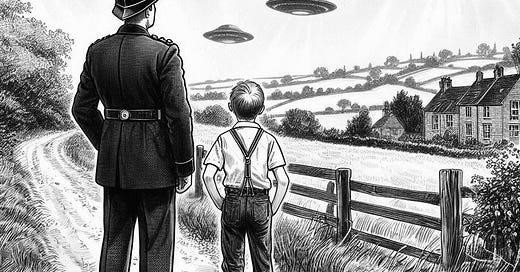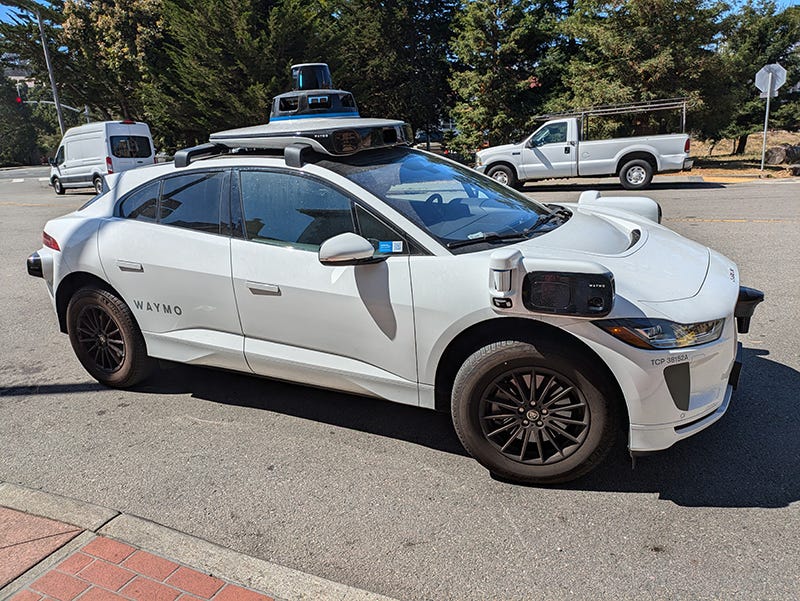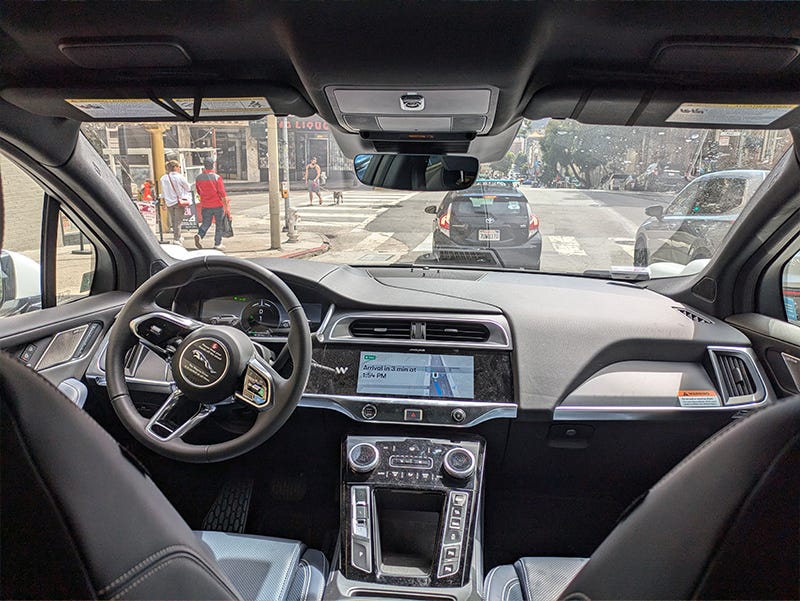The Great British UFO Hoax
Read my latest extraordinary true story; PLUS Testing Waymo's driverless cars; and podcast award news
Greetings from Planet Earth. I wrote about “The Great British UFO Hoax”, a real-life sci-fi caper involving an apparent invasion of flying saucers that had the UK authorities extremely rattled but wasn’t quite what it seemed. You can read the story over at Narratively.
Here’s a taster:
Neil Batey, a shaggy-haired 15-year-old paperboy, was on his way to deliver newspapers when he spotted a strange object. It was early on a warm and still Monday morning, September 4, 1967. He had walked across a cricket field from his family’s home in Clevedon, a seaside town in Somerset in South West England, on his way to the newspaper shop to pick up his deliveries. He saw it as he came over Dial Hill, the town’s highest point. “Just off the footpath, in the long grass,” Neil tells me when we speak on the phone, “was a large silver flying saucer.”
Read The Great UFO Hoax on Narratively.
(This link should get you over the paywall, but if you find that the story is locked, you can sign up for a 7-day trial to read it for free.)
Now for something else about unusual shiny objects that appear to come from another planet…
Riding the Future: Testing Waymo's Driverless Cars in San Francisco
Back in the day (around 15 years ago), I wrote about technology for the Guardian newspaper’s now-defunct weekly Tech supplement. I covered the early days of music streaming, ebooks, and, erm, rocketbelts. At least two of those things have become ubiquitous. And last month, in San Francisco (as a tourist rather than a journalist), I tried another new technology that I’m sure will soon roll out across the world — driverless cars.
Waymo is an app-based ride-hailing service similar to Uber. It’s owned by Google’s parent company Alphabet. You tap in your destination, wait for the pick-up, and pay via the app once you reach your destination. The obvious difference between Waymo and Uber is that Waymo’s cars have no drivers.
There are around 300 Waymo cars in San Francisco, and trips are restricted to within the city’s limits (so you can’t cross the Golden Gate Bridge or ride to SFO). The white all-electric Jaguar I-PACEs, kitted out with an array of navigation sensors, are a regular sight alongside the yellow cabs, hybrid Ubers, and cable cars. The experience of riding in a Waymo was surreal.
The Waymo app is very similar to Uber’s, making ordering your ride easy. When your car arrives, it pulls over with a flashing sign on the roof showing your name. Then, when you get in, you have the initially breathtaking realisation that there really is no driver. You can sit in the back or up front in the passenger seat, but the driver’s seat is empty. The steering wheel turns with ghostly precision as the car pulls away.
There’s an audio welcome and safety message, and large screens in the front and back show your progress and a very detailed graphic representation of everything the car can see, including other vehicles and pedestrians. (We noticed this is so accurate it seems to show the pedestrians’ legs moving in sync with their real ones.) You hit “Start Ride” on the screen to get moving.
The experience is remarkably relaxing. The cars are clean and comfortable, and the ride is smooth and quiet. You can listen to an ambient soundtrack or choose your own music. Waymo negotiates San Francisco’s steep-hilled, tourist-swarmed and cable car-crossed streets with ease because it has so much information — on the street layout, obstacles, and position and speed of other vehicles and pedestrians. More information than any human driver could absorb. Our Waymos skilfully negotiated double-parked obstacles, allowed signalling vehicles to pull out, and avoided jaywalking pedestrians. (It’s fun to watch the look on pedestrians’ faces when they realise the car that just avoided hitting them has no driver.)
According to the stats (and the all-important insurance companies), Waymo’s tech is much safer than human drivers, with up to 84% fewer accidents. Importantly, Waymo feels safe, which is perhaps the most surprising aspect of the whole experience. As the ride comes to an end, Waymo pulls over at the destination and monitors passing traffic, keeping the doors locked until it’s safe for passengers to exit. Once you’re out and the doors are closed, Waymo pulls away to pick up the next customer.
I was blown away by Waymo. It’s one of those things that really feels like the future. It’s a next-generation Uber. During our visit, our Waymo journeys were actually cheaper than Uber — for example $21 vs $27 for a 23-minute, 4-mile ride in pretty heavy traffic. (And Waymo’s initial success — carrying 100,000 customers every week — makes Elon Musk’s recently-announced and untested Robotaxi look like another daddy’s-got-an-emerald-mine fantasy.)
The main thing seemingly holding back a broader Waymo rollout is that the current system relies on each location being fully mapped. But give it five to ten years, and I reckon we’ll all be hailing driverless cars. Waymo is currently available to everyone in San Francisco and Phoenix and to waitlist passengers in Los Angeles and Austin. You can read more about Waymo here.
Watch a video clip — Riding in a Waymo through Chinatown, San Francisco:
Singular Discoveries Shortlisted for Independent Podcast Awards!
The Singular Discoveries podcast has been shortlisted for the Independent Podcast Awards 2024. The winners will be announced next Wednesday, 23rd October. Here’s the full shortlist. We’re nominated in the History category.
If you haven’t already listened, you can find the podcast on Apple, Spotify, and pretty much everywhere else. Listen before it wins..! All the links are here.
More next month. Please share and subscribe. Thanks for reading.









What an amazing trip Paul. Driverless cars frighten the life out of me but obviously something for the future.
Terry